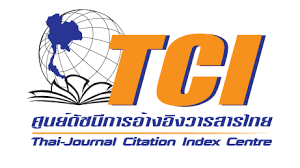Author Guidelines
Downloadable Files
- Article templates
- Reference Guidelines | .pdf
Types of Articles
Research Articles: Must not exceed 8,000 words (excluding references)
Review Articles: Must not exceed 10,000 words (excluding references)
Authors must use the following format when composing their articles:
1. Article Preparations
Paper Size and Margins
Standard A4 paper (19 cm × 26.5 cm)
Top and left margins: 3.5 cm
Bottom and right margins: 2.5 cm
Font
Times New Roman throughout the manuscript
Microsoft Word compatible
Title
12 pt, bold, centered
Maximum two lines
9.5 pt, bold, centered
Use an asterisk (*) for the corresponding author
Affiliations
9.5 pt, not bold, centered below authors’ names
Superscript numbers to link authors to their institutions
Abstract
Heading: 9.5 pt, bold, left-aligned
Text: 9 pt, single paragraph, first line indented one tab
Keywords
Heading: 9 pt, bold, left-aligned
Maximum of four keywords, separated by commas and a single space
Corresponding Author
Heading: 8 pt, bold, left-aligned with a border line above
Email: 8 pt, bold, left-aligned
Subheadings
9 pt, bold, indented one tab (0.75 inches)
Body Text
9 pt, first line of each paragraph indented one tab
References
Heading: 9.5 pt, bold, left-aligned
Entries: 9 pt, hanging indent of one tab, following APA 7th edition
Manuscript Length
Maximum 15 pages
Research articles: Must not exceed 8,000 words (excluding references)
Review articles: Must not exceed 10,000 words (excluding references)
Tables and Figures
Tables
Numbered sequentially (e.g., Table 1, Table 2)
Double-lined border at top and bottom; no vertical lines
Figures
Numbered sequentially (e.g., Figure 1, Figure 2)
Clear, legible, and concise description for each figure
Recommended formats: .jpeg or .png
2. Organizational Structure of the Article
Language: Only English is accepted. Authors should use academic, clear, and concise language to avoid ambiguity. Abbreviations must be spelled out in full upon first mention.
Article Sequence: Manuscripts should follow the structure below:
- Title: Concise and comprehensible, not exceeding 100 words or two lines.
- Authors’ Names: Listed in English, separated by commas. An asterisk (*) indicates the corresponding author. Each author’s surname is followed by a numerical superscript to identify affiliations.
- Affiliated Organizations: Placed beneath the authors’ names. Each organization is linked to its corresponding author using numerical superscripts.
- Abstract: Summarizes the significance of the research. Must be clear, concise, and not exceed 250 words or 15 lines.
- Keywords: Listed immediately after the abstract. The keywords chosen must accurately reflect the article’s topic to facilitate searching.
- Introduction: Provides context for the research, including background, rationale, and relevant literature. Research objectives and questions are clearly stated.
- Objective(s): Describes the purpose(s) of the research.
- Literature Review (if applicable): Summarizes previous studies or relevant documents.
- Conceptual Framework: Illustrates relationships between variables or conceptualizes the research.
- Methodology: Details research design, sampling methods, research tools, data sources, data collection procedures, and analytical/statistical methods.
- Results: Presents findings clearly and systematically. Tables and charts may be used, with no left/right borders, table headings bolded, and black text only. Maximum of five tables.
- Discussion: Interprets results, indicating the extent to which hypotheses are supported. Compares findings with existing research and suggest implications and provides directions for future research.
- Suggestions: Provides recommendations in 2 sections: Recommendations regarding the significance of the research, and Recommendations for future research directions.
- References: Follows the American Psychological Association (APA) 7th edition format with a maximum of 30 references.
3. Submission Procedures
https://so01.tci-thaijo.org/index.php/AJE/about/submissions
4. Article Assessment and Ownership
- All manuscripts undergo a formal peer-review process. A panel of experts from different affiliations evaluates each article, and approval from at least two reviewers is required for publication. Authors must complete any requested revisions prior to publication.
- Once published in the ASEAN Journal of Education, the article becomes the intellectual property of Suan Dusit University. Any reproduction, in whole or in part, requires permission from the university.
- Except for printing errors, authors are fully responsible for the content of their articles.
5. Privacy Statement
Names and email addresses provided on this journal site are used exclusively for journal-related purposes and will not be shared with any third party or used for any other purpose.





